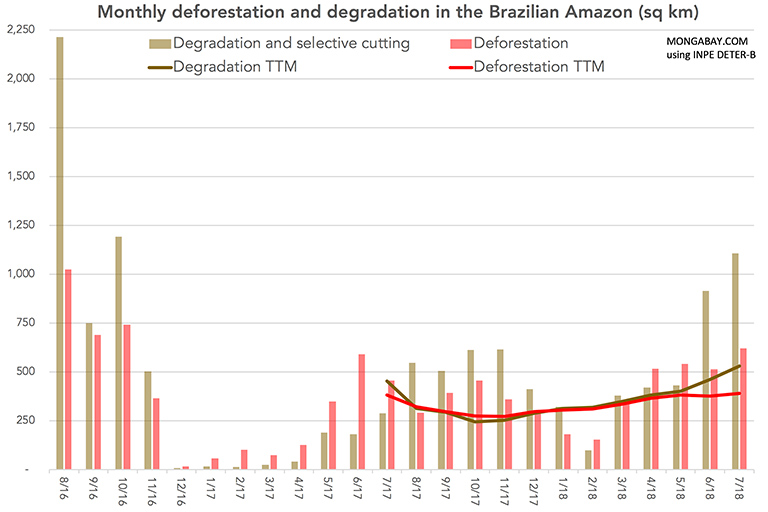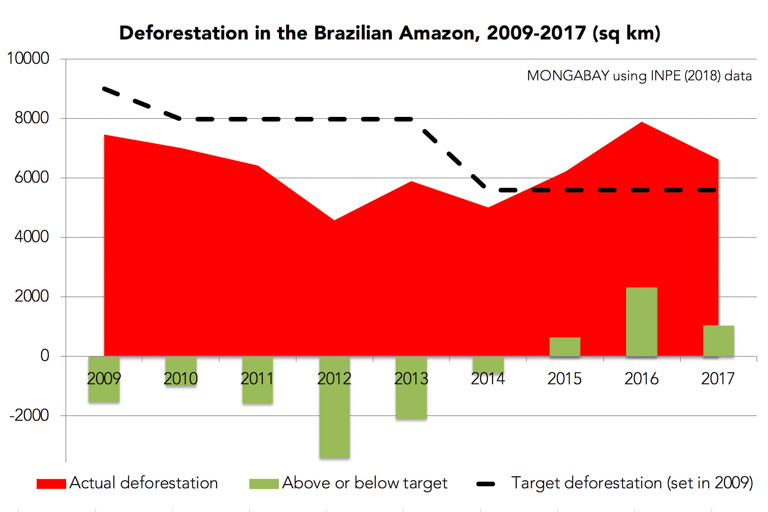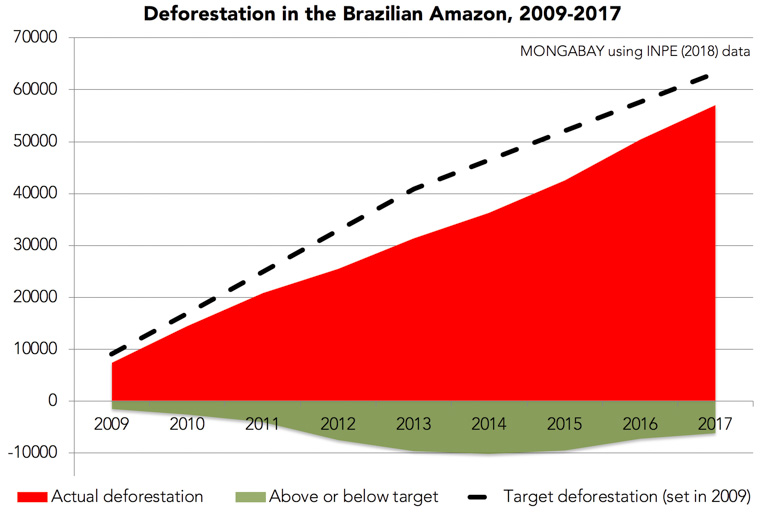- Deforestation in the Brazilian Amazon continues to trend higher, reports Imazon, a Brazilian NGO that independently tracks developments in Earth’s largest rainforest.
- Data from Imazon’s monthly deforestation tracking system indicates 778 square kilometers of forest were cleared in July, a 43 percent increase over a year ago.
- Imazon’s findings contrast with official data from Brazil’s national space research agency INPE, which shows a comparably flat trend line.
Deforestation in the Brazilian Amazon continues to trend higher, reports Imazon, a Brazilian NGO that independently tracks developments in Earth’s largest rainforest.
Data from Imazon’s monthly deforestation tracking system indicates 778 square kilometers of forest were cleared in July, a 43 percent increase over a year ago. The twelve month average is 358 square kilometers, up 49 percent.
Imazon’s findings contrast with official data from Brazil’s national space research agency INPE, which shows a comparably flat trend line. INPE recently released a new short-term deforestation tracking system called DETER-B that breaks out deforestation, forest degradation, fire, and other land use changes.
According to Imazon, deforestation increased most sharply over the past year in the states of Pará and Tocantins, both of which saw forest clearing rise by more than 2,000 percent relative to the prior year. Both states — like Mato Grosso, which ranks second in gross forest loss over the past year — produce large volumes of soy and cattle, which are the largest direct drivers of deforestation in the legal Amazon.

Macroeconomic conditions and Brazil’s current political climate are conducive to rising deforestation. Donald Trump’s trade war with China has buoyed agricultural exports from Brazil to China, while the strong U.S. dollar and weak real have further increased profitability of agribusiness. At the same time, Brazilian President Michel Temer is working with Congress to push through measures that are weakening environmental protections in the country.
The recent uptick in deforestation in the Brazilian Amazon represents a departure from the significant decrease in annual forest loss between 2004 and 2012. That decline was driven by a combination of government policies — including forest monitoring, law enforcement, private sector incentives, and conservation initiatives — and economic conditions.

That historic reduction in deforestation has helped Brazil make progress toward its climate goals. Earlier this month, the Brazilian government announced that it has already met its 2020 target for reducing greenhouse gas emissions from deforestation in the Amazon and the cerrado.
But scientists warn the celebration may be premature given the past three years have all had higher-than-budgeted rates of deforestation in the Amazon and that forest loss is again rising in the region. Put another way, the Temer administration is effectively touting progress that occurred before it assumed power.




